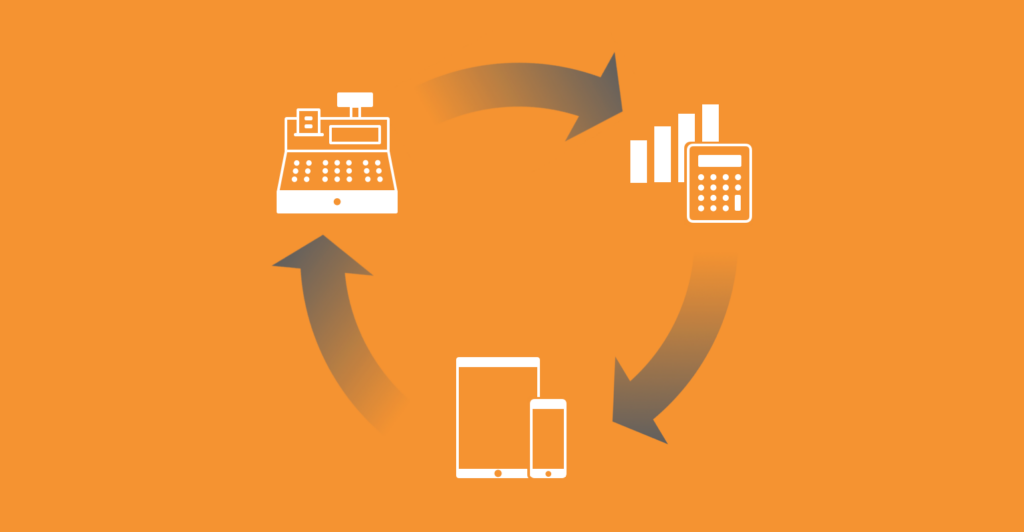Updated on: February 9, 2025
What Is a Restaurant Information System?
A restaurant information system is a comprehensive set of digital tools designed to help restaurant owners and managers oversee all aspects of their business efficiently. These systems integrate essential functions such as point-of-sale (POS) operations, inventory tracking, staff scheduling, financial management, and customer engagement into a unified platform. Some integrated software can even handle mobile payments, table management, and/or loyalty programs. By centralizing data and automating processes, a restaurant information system enables operators to streamline operations, reduce costs, and enhance the overall dining experience. Whether managing multiple locations or a single establishment, these systems provide actionable insights through reporting tools, helping businesses make informed decisions and achieve long-term growth.
What Systems Do I Need for My Restaurant Business?
Some information systems, such as event management software, are used only by specific businesses in the restaurant industry based on their needs. However, it’s common to find restaurant operators relying on one or two of the three most important data management systems created for the industry—point-of-sale, back-office, and accounting. These software solutions make life easier. One problem they often face is that operators using all three don’t always have integrated restaurant information systems. A successful restaurant management system includes controlling your numbers on multiple levels, a task long ago outpaced mere cash registers and adding machines. Restaurateurs who understand the big picture of their business know to integrate all three systems to give them the clearest picture of how well their business is performing. Read on to learn more about business management and the three most important restaurant information systems your restaurant needs.
A Point of Sale (POS) System
Few businesses are as numbers-driven as restaurants, and there’s no better tool to have at the front of the data chain than a modern point-of-sale system. A restaurant POS system will help collect, organize, and interpret your restaurant’s numbers. Some advanced POS software will even track current and historical guest counts, transactions, order specifics, trends, etc. The best restaurant POS system delivers orders to the kitchen accurately and quickly, communicates to counter workers and servers when items are running low or out, and prompts service staff to upsell specials and high-margin items. Some offer employee time clocks and dashboard features, but POS systems typically lack the robust features provided in a true back-office system.
A Back-Office System
Arguably the most important data management component in a restaurant, a back-office system is the information hub for all others. Maximized through integration with a POS system, it can manage inventory, purchasing and online ordering, scheduling, and even food safety (HACCP) compliance. Using its precise tracking of sales, purchasing, and inventory, operators can reduce shrinkage from waste and theft. Operators can improve purchasing accuracy through suggested orders that balance current inventory with historical and forecasted sales. A back-office system also increases productivity by automatingcally purchasing, reporting, and utilizingsing historical sales data. It can evaluate labor cost as a sales factor to create optimal suggested labor schedules and ensure labor numbers remain on target. With software features like productivity and reporting capabilities, the back-office system is a critical component for operators to scale their operations.
An Accounting System
By tapping into the power of a robust back-office system, an accounting system becomes the essential bookkeeping tool in your restaurant’s information system arsenal. It manages payroll to the penny by merging time and attendance data from the POS and back office systems. It accomplishes the task of billing by reconciling purchase orders and invoices from purchasing data supplied by the back-office system. Financial reporting is simplified when the system is programmed to generate income statements and balance sheets, keeping operators fully aware of their business’s financial standing anytime they want to know.
Inventory Management Software
Effective inventory management is critical for controlling food costs, reducing waste, and ensuring seamless daily operations in any restaurant. Modern inventory management software takes the guesswork out of tracking inventory levels, allowing restaurant owners to streamline processes and improve efficiency.
With the right restaurant inventory management system, operators can track ingredient usage in real-time, automate reordering, and reduce the risk of overstocking or shortages. These tools also integrate seamlessly with POS systems, providing accurate sales data that helps forecast demand based on past trends. Inventory management software enables centralized tracking for restaurants with multiple locations, ensuring consistency across all sites.
Beyond tracking inventory, these systems offer features like recipe costing, helping restaurant managers monitor menu items’ actual vs. theoretical food costs. This insight allows businesses to control food costs effectively by identifying discrepancies and addressing problem areas. Additionally, these tools support waste management by highlighting which items are nearing expiration or being overproduced, minimizing food waste, and boosting profitability.
Investing in an inventory management system is essential for restaurant operators who want to enhance efficiency, save time, and make data-driven business decisions. When combined with other restaurant information systems, such as POS and back-office tools, inventory management software becomes indispensable to a robust restaurant management system.
In Conclusion: What Restaurant Management Software Should You Choose?
Some may consider such data automation systems pricey and unnecessary. Yet, by providing restaurant operators exceptionally tight control over crucial numbers, such systems pay for themselves in as little as a year or two through the accumulation of cost savings. These systems provide important insights into how a restaurant works by highlighting top-selling items and loss leaders, sales peaks and troughs, balanced labor costs, and dangerous overtime potential.
For restaurant operators seeking a comprehensive solution, SynergySuite offers award-winning, all-in-one back-of-house restaurant management software designed by restaurateurs for restaurateurs. From inventory and scheduling to food safety and analytics, SynergySuite’s modular platform allows you to select the features that best fit your needs. With tools that integrate seamlessly with your existing POS, payroll, and HR systems, SynergySuite empowers you to streamline operations, improve efficiency, and drive profitability.
Ready to see the difference a robust restaurant information system can make? Schedule a demo with SynergySuite today and take the first step toward transforming your operations and boosting your bottom line.






